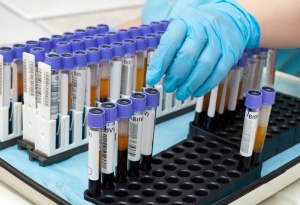Difference between revisions of "Biobanking"
(Added information to History section) |
|||
| Line 8: | Line 8: | ||
==History== | ==History== | ||
| + | Before the 1990s, scientists and researchers would themselves have to collect biological samples for each experiment they did. There was no unified system of sharing that was readily available to them. The effects of this could most easily be seen in the field of genetics, where scientists relied on prior research of a given sample to inform them of what areas to explore or tests to conduct regarding their own unique samples.<ref>Greely, H. T. (2007). "The Uneasy Ethical and Legal Underpinnings of Large-Scale Genomic Biobanks". Annual Review of Genomics and Human Genetics 8: 343–364. doi:10.1146/annurev.genom.7.080505.115721. PMID 17550341.</ref> | ||
| + | |||
| + | Eventually, this changed due to the realization that while diseases and disorders have genetic component, very few of them owe their manifestation to a single defective gene -- rather, they are caused by multiple genetic factors occurring on a multitude of different genes. As a result of this discovery, it was realized that it was necessary to perform genome-wide scans of a given biological sample vs the one-off genetic analysis of individual genes. | ||
| + | |||
| + | Around the time that this was happening, technological advances made it possible for the mass sharing of information. Thus, when data was collected, scientists doing genetic analysis found that they could coordinate their research efforts and have their work contribute to a larger body of knowledge in the field of genetics itself, thus allowing researchers the world over to access information derived from each other's work. Where before, genetics research was originally limited to a single laboratory or institution, now it was placed into unified and networked databases that the scientific community could access instantaneously with nothing more than an internet connection and computer. These were the world's first biobanks. | ||
==References== | ==References== | ||
Revision as of 16:57, 26 April 2016
Biobanking is a form of biological storage, used in research settings. From the 1990s onwards, biobanks have become instrumental in medical research, particularly in the fields of genomics and personalized medicine.
Biobanks allow researchers to collect and analyze vast quantities of data. The samples and data collected by biobanks are often used by researchers in multiple projects and settings, most significantly cross-purpose studies, often for the purposes of fighting and understanding diseases and how they are spread. Prior to the advent of biobanks, acquiring samples for these purposes was much harder than it is now.
Ethically, biobanks have raised questions on privacy, research ethics, and medical ethics. While viewpoints on these ethics are varied, the general consensus is that strong ethical guidelines and policies are needed for the purposes of operating a biobank, as failing to do so can be detrimental to biobanks themselves, as well populations that allow biobanks to open in their local communities.
History
Before the 1990s, scientists and researchers would themselves have to collect biological samples for each experiment they did. There was no unified system of sharing that was readily available to them. The effects of this could most easily be seen in the field of genetics, where scientists relied on prior research of a given sample to inform them of what areas to explore or tests to conduct regarding their own unique samples.[1]
Eventually, this changed due to the realization that while diseases and disorders have genetic component, very few of them owe their manifestation to a single defective gene -- rather, they are caused by multiple genetic factors occurring on a multitude of different genes. As a result of this discovery, it was realized that it was necessary to perform genome-wide scans of a given biological sample vs the one-off genetic analysis of individual genes.
Around the time that this was happening, technological advances made it possible for the mass sharing of information. Thus, when data was collected, scientists doing genetic analysis found that they could coordinate their research efforts and have their work contribute to a larger body of knowledge in the field of genetics itself, thus allowing researchers the world over to access information derived from each other's work. Where before, genetics research was originally limited to a single laboratory or institution, now it was placed into unified and networked databases that the scientific community could access instantaneously with nothing more than an internet connection and computer. These were the world's first biobanks.
References
- ↑ Greely, H. T. (2007). "The Uneasy Ethical and Legal Underpinnings of Large-Scale Genomic Biobanks". Annual Review of Genomics and Human Genetics 8: 343–364. doi:10.1146/annurev.genom.7.080505.115721. PMID 17550341.
